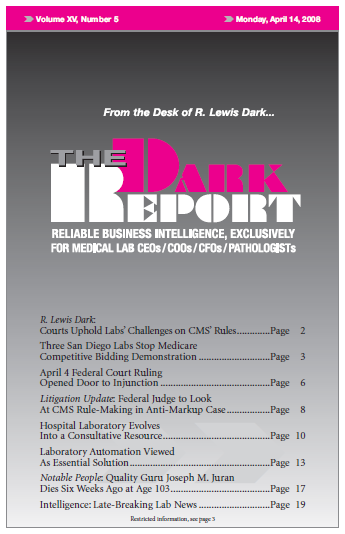CEO SUMMARY: Every laboratory recognizes it has the knowledge and expertise to become more of a consultative resource to its referring physicians. At 248-bed J.T. Mather Hospital in Port Jefferson, New York, the laboratory director took advantage of administration’s interest in improving laboratory test utilization by creating an enriched program of education and collaboration. The […]
To access this post, you must purchase The Dark Report.


